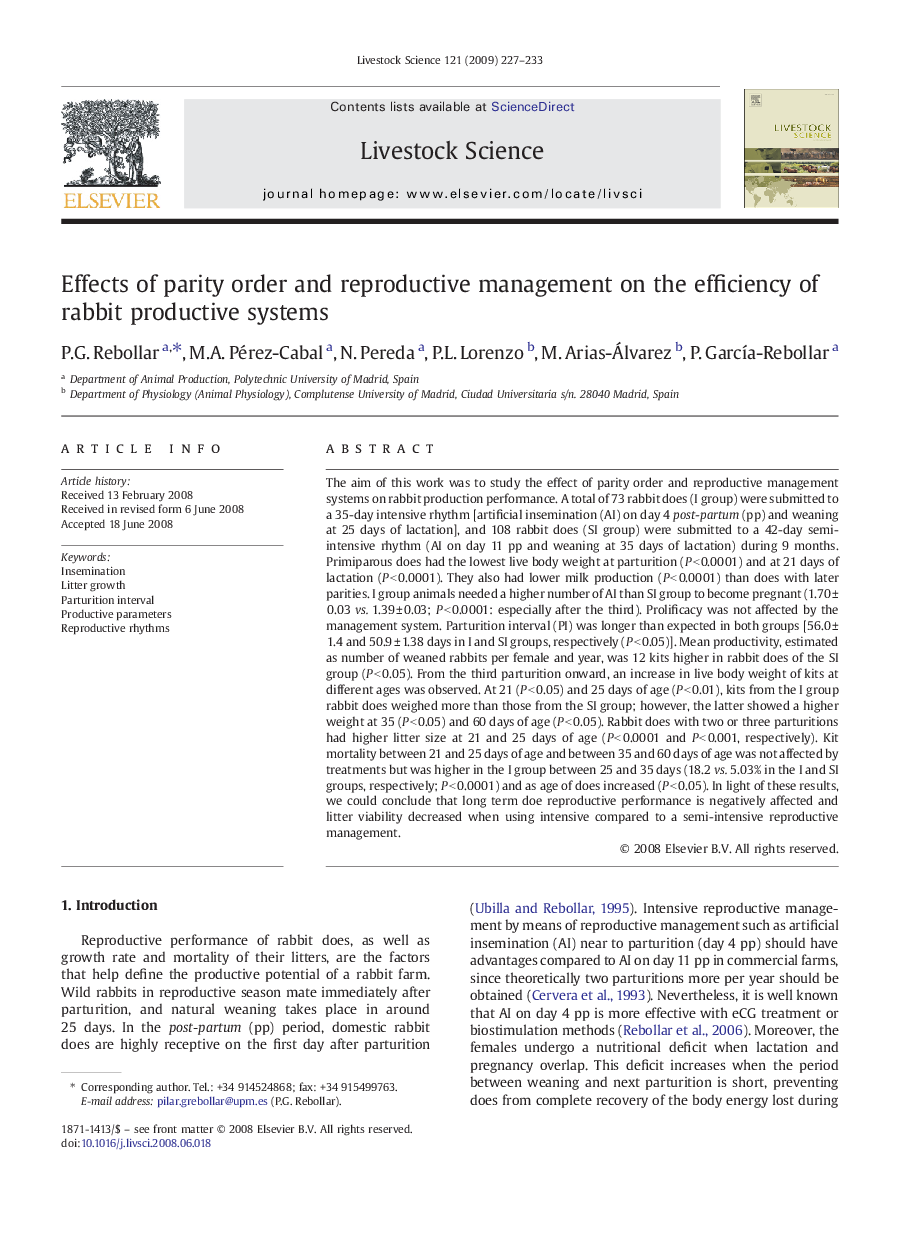| Article ID | Journal | Published Year | Pages | File Type |
|---|---|---|---|---|
| 2448268 | Livestock Science | 2009 | 7 Pages |
The aim of this work was to study the effect of parity order and reproductive management systems on rabbit production performance. A total of 73 rabbit does (I group) were submitted to a 35-day intensive rhythm [artificial insemination (AI) on day 4 post-partum (pp) and weaning at 25 days of lactation], and 108 rabbit does (SI group) were submitted to a 42-day semi-intensive rhythm (AI on day 11 pp and weaning at 35 days of lactation) during 9 months. Primiparous does had the lowest live body weight at parturition (P < 0.0001) and at 21 days of lactation (P < 0.0001). They also had lower milk production (P < 0.0001) than does with later parities. I group animals needed a higher number of AI than SI group to become pregnant (1.70 ± 0.03 vs. 1.39 ± 0.03; P < 0.0001: especially after the third). Prolificacy was not affected by the management system. Parturition interval (PI) was longer than expected in both groups [56.0 ± 1.4 and 50.9 ± 1.38 days in I and SI groups, respectively (P < 0.05)]. Mean productivity, estimated as number of weaned rabbits per female and year, was 12 kits higher in rabbit does of the SI group (P < 0.05). From the third parturition onward, an increase in live body weight of kits at different ages was observed. At 21 (P < 0.05) and 25 days of age (P < 0.01), kits from the I group rabbit does weighed more than those from the SI group; however, the latter showed a higher weight at 35 (P < 0.05) and 60 days of age (P < 0.05). Rabbit does with two or three parturitions had higher litter size at 21 and 25 days of age (P < 0.0001 and P < 0.001, respectively). Kit mortality between 21 and 25 days of age and between 35 and 60 days of age was not affected by treatments but was higher in the I group between 25 and 35 days (18.2 vs. 5.03% in the I and SI groups, respectively; P < 0.0001) and as age of does increased (P < 0.05). In light of these results, we could conclude that long term doe reproductive performance is negatively affected and litter viability decreased when using intensive compared to a semi-intensive reproductive management.
